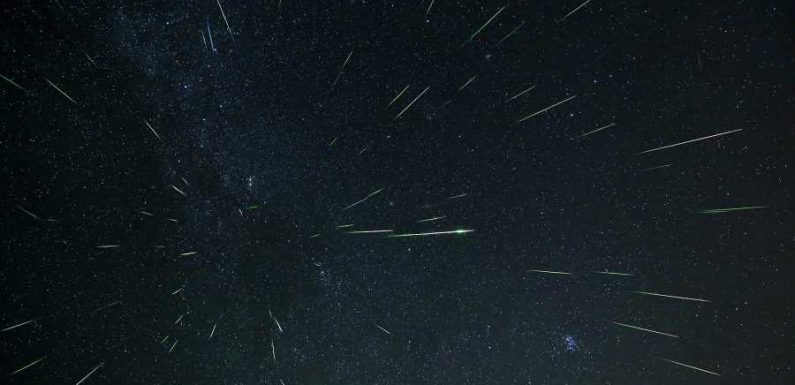
Every year in August, the night sky grows even more wondrous when the Perseid meteor shower takes place. In fact, NASA considers the annual event “the best meteor shower of the year,” since the fast and vibrant space rocks often leave long streaks of light and color behind. Though the meteor shower already started on July 14, it lasts through Aug. 24, with the peak viewing period in mid-August — and this year promises prime viewing conditions.
What is the Perseid meteor shower?
A meteor, also called a meteoroid, is essentially a space rock — ranging in size from a tiny particle to a boulder — that enters Earth’s atmosphere and falls toward the surface. During the downfall, the air it passes through makes it hot — and it’s that hot air that we see glowing, NASA explains. When there are many of them, we group them together as a meteor shower.
Known for their fireballs, the Perseids, which comes from the 109P/Swift-Tuttle comet, are one of the most plentiful showers, with 50 to 100 meteors visible every hour as they move through the Earth’s atmosphere at a speed of 37 miles per second. Since the fireballs start from bigger particles, the bursts of light tend to be larger and brighter, the government agency says.
What’s the best time to see the shooting stars?
We often call those streaks that the meteors leave behind “falling stars” or “shooting stars,” even though there aren’t any stars involved — it’s actually a meteor shower. This year, the peak time to catch the Perseid meteor shower will be between Aug. 11 and 13, from the hours of 2 a.m. and dawn, Smithsonian Magazine reports. Since this particular shower is so plentiful, it’s possible to spot the meteors as early as 9 p.m in the Northern Hemisphere or midnight in the Southern Hemisphere in areas far from any extraneous light.
Gallery: Super Moons and other anticipated astronomical events of 2021 (StarsInsider)
What’s the best way to see the Perseid meteor shower?
To truly see the Perseid meteor shower in all its glory, Bill Cooke of NASA’s Marshall Space Flight Center tells Space.com that planning is key. He suggests going far from any bright lights and giving your eyes time to adjust. “My suggestion to my friends who want to observe meteors is, leave your phone inside,” he says, noting that the device’s illumination will also affect your eyes. He recommends about 30 to 45 minutes to adjust to the setting.
“A good philosophy is to lie on your back and look straight up,” he adds. “That way, you take in as much of the sky as you can.” While some may be tempted to look for the starting point, called the radiant, the most prominent streaks will be farther from where it originates — though knowing which way it’s coming from can help.
Where can I go to see the Perseid meteor shower?
Of course, sanctioned International Dark Sky Parks are a better bet, especially areas that tend not to have troublesome weather in August. Joshua Tree National Park calls the Perseids “one of the most consistently reliable meteor showers each year.” Other choice locations include Cosmic Campground International Dark Sky Sanctuary (which happens to be the first International Dark Sky Sanctuary located on National Forest System lands) near Alma, New Mexico, or Cherry Springs State Park (where there’s a field on top of a 2,300-foot mountain) in Coudersport, Pennsylvania.
Will the moonlight be an issue this year?
Last year, the moon happened to be half full during the peak viewing period, so its brightness made the meteors harder to spot. This year, however, during the prime day on Aug. 12, the moon will be waxing crescent with only 13% illumination, so it shouldn’t drown it out as much as in 2020, Smithsonian Magazine reports.
When is the next meteor shower?
Meteor showers happen year-round, with the Quadrantids in December and January, Lyrids in April, Orionids in October, Leonids in November, and Geminids in December, but it’s the August Perseids that have earned the reputation as the best light show in the sky.
Source: Read Full Article









